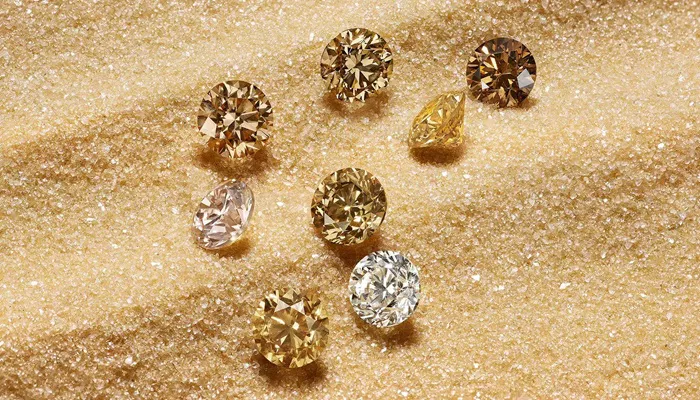De Beers Group has launched a new “Lighthouse” initiative after 16 years, aimed at boosting demand for natural diamond jewelry through industry collaboration. The collection, called “Ombré Desert Diamonds,” was unveiled by CEO Al Cook at a recent company breakfast in Las Vegas.
The program will focus on diamonds with warm tones, including champagne, brown, amber and light yellow. De Beers will promote the collection heavily.
While diamonds in this color range have been used before, such as Le Vian’s “Chocolate” diamonds and De Beers’ own “Talisman” series, this new focus is being promoted on a larger scale. At the same time, natural diamonds are facing increasing competition from lab-grown diamonds.
The Gemological Institute of America (GIA) recently announced that it will adopt simpler color and clarity terms to describe lab-grown diamonds as they become increasingly colorless and clearer. This shift highlights the unique appeal of natural diamonds, especially those with unique colors like those in the new “Lighthouse” collection.
Cook explained that the collection is inspired by the origins of diamonds, with a focus on sustainability and ethics. He hopes that future customers will inquire about the provenance of the diamonds they buy, asking questions such as, “Where does my diamond come from? Is it ethical? Is it sustainable?” The collection also features stunning views of the African desert, where many of De Beers’ diamonds are mined. Cook stressed that natural desert diamonds offer a stark contrast to increasingly commoditized synthetic diamonds. “In an age when consumers are rejecting mass-produced goods and seeking authenticity, desert diamonds are unique in both color and origin,” Cook said. “These diamonds are about more than just beauty—they represent something more: a connection to the earth and a story that synthetic diamonds can’t tell.” He also noted that there is a significant price difference between natural and synthetic diamonds, noting that synthetic diamonds can be found for as little as $45 per carat. “Our goal,” Cook said, “is to inspire a higher desire for diamonds.” De Beers last launched the Beacon collection in 2009, with its “Everlon” knot design inspired by the ancient Hercules knot. As with the previous Beacon series, De Beers plans to use media and digital marketing to stimulate consumer interest in the “Gradient Desert Diamonds”. The company will also provide marketing materials to retail partners.
Cook pointed out that unlike previous design-centric series, this new series focuses on both design and the origin of the diamonds. “The design itself is beautiful, but what really makes it magical is the story of the diamond’s origin,” he said.
In addition to the “Beacon” series, De Beers has also launched a new loose diamond project “Provenance, De Beers Group”. The program is powered by the Tracr blockchain platform and enables consumers to track the origin of their diamonds. Retailers will have access to digital tools to help consumers learn more about the origin of the diamonds and the story behind the brand.
Related topics:
- Titan’s CaratLane Plans Expansion as Young Indians Choose Lower-Carat Jewellery
- Two Women Caught Stealing Gold Jewellery from Nagerbazar Store
- 16 Child Labourers Rescued from Imitation Jewellery Units in Rajkot


